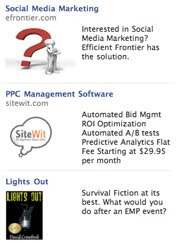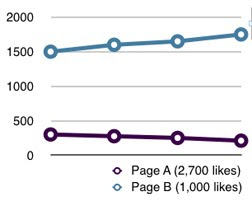 One of several striking moments in the film Waiting For Superman was its explanation that our education system was designed to create a workforce consisting of a 40-60 percent split between professionals and skilled workers. In 1950, it made sense.
One of several striking moments in the film Waiting For Superman was its explanation that our education system was designed to create a workforce consisting of a 40-60 percent split between professionals and skilled workers. In 1950, it made sense. At the time, 34 percent of all jobs in the United States was in manufacturing. People who weren't employed in manufacturing, much like today, sought out jobs in the service sector, which paid slightly less and was more likely to include part-time employment. But by 2002, things had changed. The manufacturing percentage had shrunk to 13 percent. And in 2009, it shrunk again to 9.25 percent.
But even more striking is that of the manufacturing positions that remain, many are skewing toward highly skilled manufacturing jobs, which require 2-year associate's degrees or even 4-year degrees. Of course, some of those would-be positions are sometimes moved overseas too.
A few years ago, for example, SunPower, one of the country's largest makers of solar panels, created 5,000 high-skilled manufacturing jobs that ended up in the Philippines. Tax packages, lower wages, and a better trained workforce were cited as the reasons.
The two-fold labor dilemma in the United States.
This is at the heart of the education dilemma in the United States, without much blame being cast on anyone. The U.S. is not producing enough of an educated workforce to meet the demands of its own needs. Case in point: the U.S. now ranks 20th in reading literacy, 18th in math literacy, and 14th in science. But it also ranks second in number of students who find it boring.
In a shrinking world, where so much of the world participates and competes in a global economy (mug manufacturers and some small book publishers outsource the work for less), the U.S. will eventually have to face one of two choices — continue to allow education to erode and hope it can continue to create service positions or refocus its efforts on creating a workforce that can meet its highly skilled manufacturing, technological, and science needs.
if we don't, most studies seem to suggest that the country will continue to have unemployment problems — it is priced too high for low skilled manufacturing and the workforce isn't educated enough for highly skilled manufacturing. That could mean as many as 30 percent of high school graduates (and dropouts) won't be able to find suitable employment. That leaves two choices: entitlement programs or crime.
So how do we fix it? Many people say they have solutions, but many of these solutions pinpoint singular problems. For example, some say we need more oversight or better teachers or better parents or even better students. Few people, it seems, focus on the more important aspect of education — education itself. Except, of course, the students themselves.
If it doesn't seem obvious, the answers these students provide all point to one singular challenge — they are disengaged. Everything else in their lives and what is happening in the world today is more engaging than the education they receive.
At the same time, immersive education doesn't only have to rely on technology as the video suggests. But it does touch on one of the primary changes to public education that needs to be embraced as early as the fourth grade, if not sooner. Students need to be engaged.
The contrast between a disengaged and immersive educational track.
Fourth grade students are frequently given random one-page stories, followed by questions about what they just read. They are introduced to random mathematical theories (often with an introduction using approximations) without any explanation of where it came from or how it might be applied. They are given a steady stream of spelling words, but most of them are only studied for for short-term memorization. And none of what they learn seems to apply to anything they might need to know in the future.
Is there a better way? I think so. Enough so that I'll devote the next two Mondays to exploring the topic (for starters).
But some of it is fairly simple. If you took a room of fourth graders and gave them an historical context about Egypt and then introduced them to building pyramids (mathematics), asked them to draw maps tracking the expansion of an empire (geography), suggested they code the lyrics of a song using hieroglyphics (language), invited them to draw pictographs (art), and then told them to make up their own story from the point of view of a king or slave (critical thinking and storytelling) ... how do you think they might feel about the education then?
My son felt pretty good when I used this lesson plan to teach him. But that wasn't in the fourth grade. He was in preschool.
Special thanks to Ruthie for bringing this video to my attention. It's an excellent refresher for reality.



























